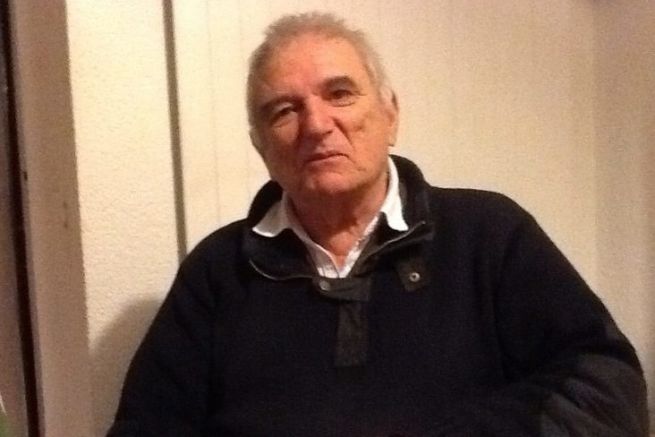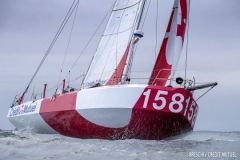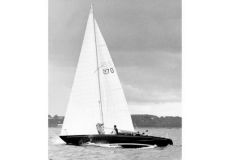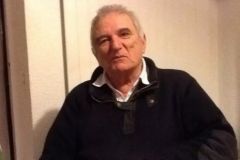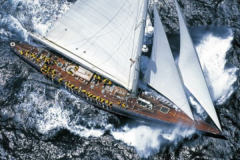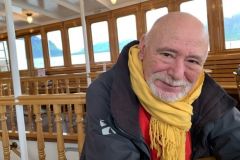Wanting to build and rebuild
When asked about his job as a naval architect, Jean-Marie Finot answers straightforwardly "I'm an architect, period." A vocation that came to him as a child, when he returned to his village in the Vosges after the Second World War.
"It was born at 3 ½ years old. I came back from the countryside, after the bombings. There was nothing left, only ruins. Everything had been destroyed by the war. And at that time, we have only one desire, to rebuild all that was destroyed. It's a bit of a sickness that I have to want to rebuild everything that doesn't work. When I was four years old, people had already told me that I was very imaginative."
Although he sailed at the age of 16 on Lake Gérardmer, it was during training courses at the Glénans that he discovered sailing. He designed the Galiote for the sailing school in 1970, then the Nautile, directly inspired by its predecessor, in 1971.
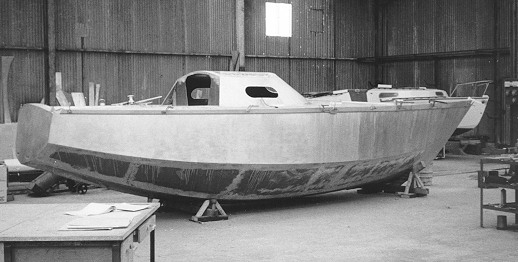
Architectural studies and internships at Les Glénans
Rather good in math, he intends to study engineering with the aim of becoming an architect.
"I sailed for 7 or 8 years at Les Glénans. I met Philippe Harlé, who was the school's technical director at the time. He had set up his own business as an architect and was looking for someone to help him. In parallel to my studies, it was good to learn how to organize a plan and build living quarters in series. So I started designing boats with him."
His first boat was born in 1967, the Rebelle, a day boat to navigate on the Seine.
"In my family, we have always drawn. My great-grandfather was a lithographer. My parents, my grandparents drew for pure pleasure. It's nice to experience that. I can't draw like that, but it's in my genes."
After his marriage, he says to himself that naval architecture is not serious. He then wishes to draw houses.
The birth of Écume de Mer and its career
"I finished my studies quite quickly and designed a last boat with Philippe Harlé. It finally became the Écume de Mer. Originally I wanted to make it a coastal cruiser, which would come ashore on the beach. But it finally became a racing boat."
Indeed, having found no French shipyard interested in building the boat, Jean-Marie Finot and Philippe Harlé finally accepted the proposal of the Dutchman Walter Huisman: to build the Écume de Mer on the condition that it would fit into the Quarter Ton category. The boat was elected "Boat of the Year in 1975".
In view of the success of this Finot design - and in particular of its transom - the architect was then contacted to design boats. This is how he started his activity in 1973.
"I designed boats for the Mallard shipyard, for Bénéteau (First series), for the Italians, for the Japanese... They were IOR boats. Then I designed boats for cruising, pleasant and fast. I never looked for clients. People always came to me or I had an idea to do something, I proposed it and it worked."
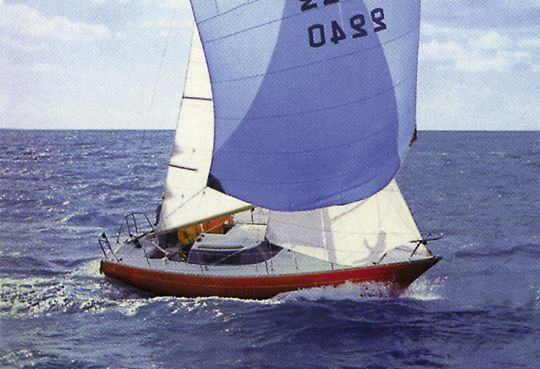
The turning point in ocean racing
In 1985, the architect joined forces with Pascal Conq. The firm then turned to ocean racing, building in particular the Mini 6.50 prototypes. But also the Figaro Bénéteau. Until the arrival of the IMOCA boats.
"We were designing boats with no measurement for the Mini Transat. The idea was to go as fast as possible, to be solid and to win the race. It matched my temperament. We designed boats that won the Mini Transat for 10 years and designed a total of 18 IMOCAs. They were the very first all-carbon boats, with a carbon mast. What makes me proud is that in the last Vendée Globe (2020-2021), we had three boats at the start, all of which finished the race, despite being over 10 years old."
The firm alternates between production and racing boat yards.
"The production boats are as important as the racing boats. We try to do the best we can in all cases. Whether it's building a house, or a boat, what's important is that people should be in harmony with themselves, with the boat and the crew. Inside a boat, they are happy, they are part of the wind, the sea, the waves. I have racers who came to thank me after the Vendée Globe to tell me they were very happy on my boat."
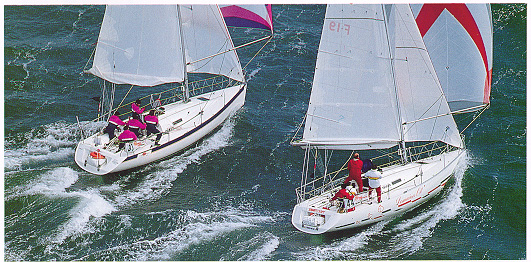
A design to gain in power
Very quickly, Jean-Marie Finot distinguishes himself by his "large" boat design.
"What is important is the increase in power and stability to carry canvas. And this stability is essentially acquired by the width. That's why our Minis were fast, our IMOCAs were fast, and our cruising boats were fast. We made wide boats when people wanted long, thin boats. It took 20 years to establish this concept. You have to be persistent.
There is also the ability to control the boat, to control the balance at the heel, the balance at the bat, and the solidity. Elegance must also be worked on. There is a certain logic of organization, which means that beauty comes with it. The boat must be as elegant as a bird.
Increase power, speed and control. That sums up my philosophy. We need to understand the boat.
I like to sail in the breeze, to go to sea, in the waves and to fight against them. The boats have to be solid, easy to build and not too expensive. And no frills!"
For the anecdote, in 1975, engineers from Renault came to consult him, envious of the freedom of design in the naval world.
"They asked me what a car was to me. I told them: a steering wheel, four wheels and seats. A few years later, they launched the Twingo. I probably had nothing to do with it, but it's fun. You have to make useful things that work, without superfluous things".
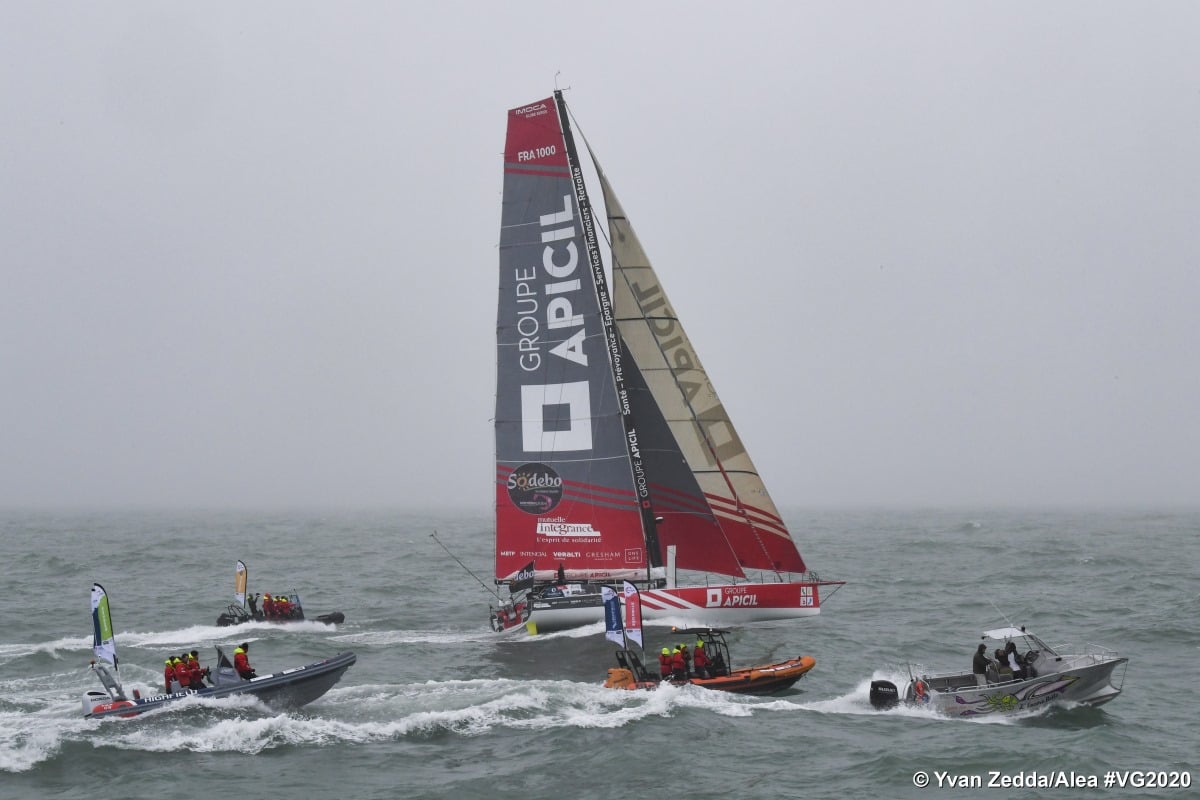
Incredible meetings and recognition
In total, 173 boats have been designed by the architect, representing some 45,000 models built. And impossible for Jean-Marie Finot to choose one.
"I have five kids and I'm proud of all my kids. It's the same with boats."
What he remembers about his job today is his encounters with great names in architecture. Van de Stadt, the architect in charge of the hull design of the sailing boat Stormvogel the first plywood and plastic sailboat. Or the American architect Olin Stephens, several times winner of the America's Cup.
"He was 75 years old and he came to see how I worked on the computer to design my boats. I was one of the first to do that. I felt flattered. I've met a lot of colleagues like that. We had fun talking together.
But also the recognition that can bring him the people with whom he has worked or for whom he has worked.
"Payment is the pleasure of people thanking you for the job done. To do this job, you need knowledge, intelligence and observation. You have to understand things. And then you need the drive, the will to do them, to build them. And then, the kindness that people bring to you transports you. You have to enjoy working with people. When you sail a boat, with a crew that you train, it's a pleasure. Whether we build a house or a boat, we work as a group. It's the pleasure of building together. The pleasure of the yard too.
In the end, it is not the number of boats built that is important, but the pleasure of the people. They thank us for our work. After 30 years of work, to hear people say that they enjoyed working with us is so nice. You have to remain modest and not think you are the best, recognition comes from others. To see thousands of people sailing, to have participated a little in the evolution of things. That's what I remember."
What if we went back?
At 80 years old, Jean-Marie Finot does not sail anymore. He has just sold his Pogo 10.50, whose rigging he had transformed to facilitate maneuvers.
"Maybe I'd get a river boat with solar panels, just to see what the weather does. I always enjoy being out on the water. I actually test-drove my boat before the sale.
We love the sea. We have tools to transmit this to others, this pleasure of the sea. At the beginning we repair boats, we try to make sure that everything works on board. Afterwards, we are skippers, and we always try to make sure that everything works on board. Then we find that everything doesn't work well, so we redesign the boats. That's why I'm an architect."
A passion that will never leave him as he concludes with this last sentence
"I believe in reincarnation. At first I wanted to be a bird. But eventually, I'm willing to take another turn as an architect."

 /
/ 